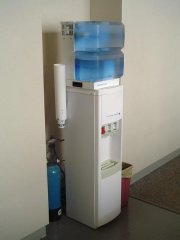3 Effective Strategies for Taking Breaks During the Workday
Breaks are a typical part of most people’s workdays. Whether they’re integrated into your regular schedule or casually meshed with your workday, breaks are one of the best ways to give your employees a much needed uncoupling from their work. While this may seem counterintuitive, taking breaks has actually been shown to boost productivity. Certain types of breaks can produce even more effective results when it comes to improving your employees’ motivation and energy.
Article: New research confirms how to take better workday breaks
Most employees take advantage of breaks, but the best way to delegate breaks is by creating an environment conducive to better, more productive breaks. In fact, both employee and employer can benefit from effective use of break times. In a time where employees are consistently asked to work longer, harder shifts, it’s time to step back and utilise these three effective strategies for taking breaks during the workday.
- Choose the Best Time: One of the easiest ways to change up breaks is by allotting breaks during the most beneficial times of the day. That is to say, schedule break times during parts of the day where their use results in the most benefits to employee and employer. Research is showing that while it may seem best to take breaks in the afternoon when the employee is feeling the most worn down from work, the converse is actually true. Schedule more break times during the morning hours to reap the benefits of higher motivation, energy, and concentration afterwards. These morning breaks are more effective at replenishing resources than afternoon or evening breaks.
- Choose Preferred Activities: Break times that are used by the employee to do things they actually enjoy doing, then the result tends to be a happier, more motivated employee after. While many may assume this to mean that breaks need to be consumed with non work-related tasks, the fact of the matter is that simply anything that the employee enjoys – whether work-related or not – yields better results after the break.
- Take Several Short Breaks Rather Than Fewer, Longer Ones: A long break has actually been shown to reduce productivity afterwards, even though one may assume that a long break gives the employee more time to do more of their enjoyed tasks. Unfortunately, the longer the break, the more likely it is for the employee to completely disengage from their workday, causing them to ‘check out’ before the day is actually over. Several short breaks allows for the momentum of the day to continue forward while giving your employees relief from the consistent onslaught of work-related stress.
Study: Give me a Better Break: Choosing Workday Break Activities to Maximise Resource Recovery
In addition to these strategies, consider also coupling better breaks with other cognitive-boosting tactics like opening a window, which has been shown to improve concentration. Simple exercises at your desk can also be useful if you find that taking a break away from your workspace is simply unmanageable.
If you’re not sure how to integrate better breaks into your (or your team’s) workday, HSG has a great suggestion for an activity that boosts concentration and fits neatly into the workday: Seated Massage. Providing your employees with an office massage is a great way to show that the company cares about its staff while boosting morale as well as reducing lost productivity due to chronic aches and pains.
HSG has Corporate Massage in Perth as well as
Corporate Massage in Sydney, and also in Melbourne, Brisbane and throughout Australia.








